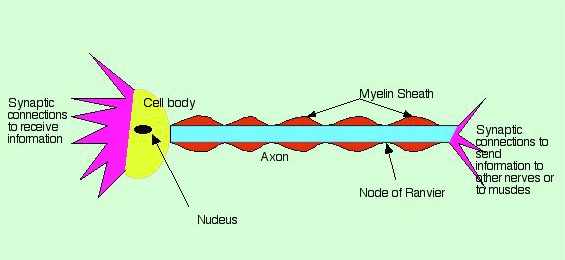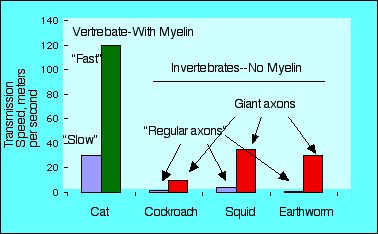The myelin sheath and speed of transmission
In this diagrammatic representation of a nerve cell, the myelin sheath is red.
At the Nodes of Ranvier the sheath thins. The action potential jumps from node
to node, moving much more quickly than it would if it were propagated along the
axon as a wave of depolarization. The sheath is composed of layers of lipid (fatty
material). Vertebrate nervous systems utilize myelinated axons as a way of speeding
signals along the nerve cell. This allows for faster reaction times.

Invertebrates lack myelin on their axons. Giant axons, such as those found in
cockroaches and squid, are up to 1.0 mm in diameter. Because their large diameter
gives them less electrical resistance, action potentials move faster than in other
invertebrate nerves, but still not as fast as those of vertebrates (data in figure
from Bullock and Horridge, 1965). Giant axons are used in nervous circuits in
which speed of response is critical, such as those involved in organizing escape
behavior.
Bullock, T. H. and G. A. Horridge 1965. Structure and function in the nervous
sytems of invertebrates. Freeman: San Francisco.
page 2-*
copyright ©2002 Michael D. Breed, all rights reserved


